A century ago, in the summer of 1915, the Victoria & Albert Museum mounted an exhibition of the work of a living artist for the first time. This was the sculptor Ivan Mestrovic (1883–1962), to whom two whole galleries were devoted in a display designed by the English architect Charles Holden (who had already collaborated with another modern sculptor, Jacob Epstein, on the tomb of Oscar Wilde in Paris and on the British Medical Association building in the Strand). This exhibition was partly a propaganda exercise, for it was sponsored by the government of Serbia, a wartime ally which was then resisting Austro-Hungarian and German invaders, while Mestrovic was celebrated as expressive of ‘South Slav’ – Jugoslav – independence. It was nevertheless a great success, much visited and very influential.
The exhibition was dominated by sculptures for the proposed Temple of Kosovo designed by Mestrovic: caryatids and standing figures depicting heroes and victims connected with the Serbian national myth of victimhood and resurrection, the Battle of Kosovo of 1389. And in the centre was a huge wooden model of this proposed monument, otherwise known as the Vidovdan Temple because the Ottoman victory over the Serbian Army occurred on St Vitus’s Day. It was an extraordinary design: a composition of octagonal domed pavilions combined with a long ‘nave’ lined with figures and a tall tower composed entirely of tiers of caryatids. Although the primitive Doric order was employed, as on so many contemporary architectural monuments, the whole conception was quite unlike anything else – very different, say, from the contemporary German monument to the Battle of the Nations at Leipzig with its brutal sculptures by Mestrovic’s supposed rival, Fritz Metzner.
I make no apology for returning to the subject of Mestrovic (and architecture), for it seems extraordinary that this great artist, to whom exhibitions were devoted in both Europe and North America, who was once an international figure consulted by statesmen about Balkan politics, and who was hailed in 1924 by Gertrude Stein as the ‘new Michelangelo’, should today be so little known. Politics is part of the explanation, as Mestrovic’s career reflected the horrors of European history in the 20th century. A Dalmatian Croat and a Catholic, he later repented of his youthful identification with aggressive South Slav nationalism and became dismayed by Serbian domination within the Jugoslav federation. He was also later regarded as a traitor by the Croatian fascists, the Ustase, who very nearly executed him during the Second World War, and he ended his career in the United States as he would not live in Tito’s Communist Yugoslavia.
Several questions arise when considering the model of the unexecuted monument once shown in pride of place in the V&A. The first is its fate, for it was not shown at subsequent post-1918 Mestrovic exhibitions and has long been known only from contemporary photographs. While many of the Kosovo sculptures were presented to King Alexander of Jugoslavia and are today in the National Museum in Belgrade, it seems that, at some point, Mestrovic took the Temple of Kosovo model with him to the United States, for it was discovered in a warehouse in New York in the 1960s and then repatriated to the then-Yugoslavia, where it was subsequently restored. It is thrilling to realise that this spectacular architectural model can be seen in the National Museum in Krusevac, Serbia.
A more obvious question is the inspiration for this most unusual design. It was surely local and patriotic, for the domed octagonal form is that of Diocletian’s Mausoleum in Split which Mestrovic knew well, an ancient building converted into a Christian church and later given a tall Romanesque campanile strongly reminiscent of that of the model. Even so, it seems a very sophisticated creation for a sculptor. Did he have help? In his later projects, Mestrovic enjoyed the assistance of the architect Harold Bilinic, the son of his boyhood master in carving. Bilinic seems to have been prepared to carry out the sculptor’s ideas faithfully – unlike the first architects whom he employed to build his studio in Zagreb in 1920–25, who soon resigned. But if Mestrovic did work with an architect on the Vidovdan Temple, his collaborator’s name seems not to have been recorded.
The domed pavilion theme combined with caryatid sculptures was realised in Mestrovic’s first post-war building, the mausoleum for the Racic family in Cavtat, otherwise known as the church of Our Lady of the Angels (see Apollo, February 2014). It was further developed, without the caryatids, in the village of Otavice, the Mestrovic family home, where he constructed a domed mausoleum that doubles up as the Church of the Holy Redeemer. This was built in 1926–31, although the decoration of the dome was never completed. As for the caryatids that were such an important theme in the sculptor’s architecture, they were used again – eight of them, in dark marble – in the tomb-like Monument to the Unknown Hero at Avala outside Belgrade, which he built in 1934–38. They even appeared posthumously: although then in exile, Mestrovic was again asked in the 1950s to design a mausoleum for the 19th-century Montenegrin national poet, P.P. Njegoš, on the top of Mount Lovćen, an astonishing project which, despite opposition, was eventually completed in 1974.
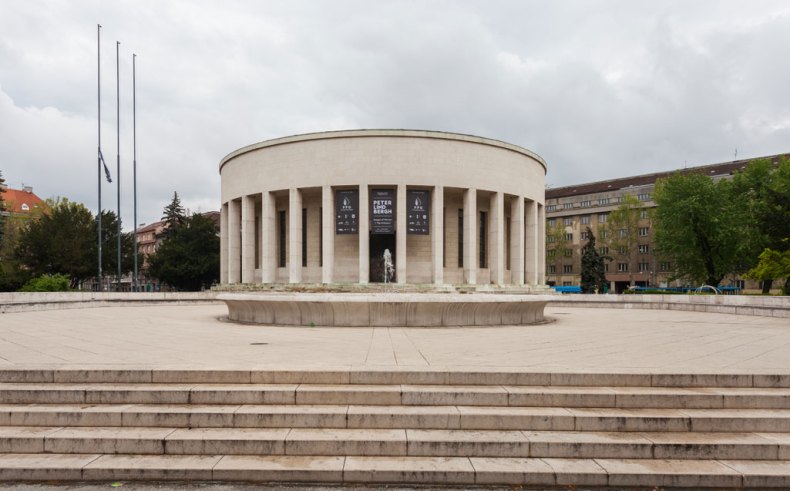
The Pavilion of the Arts, Zagreb, built by Meštrovic and collaborators in 1934–38 Photo: Diego Delso/Wikimedia Commons (used under Creative Commons licence [CC BY-SA 4.0])
This elegant, spare structure has now been restored for its intended purpose (as a home for the Croatian Association of Artists), but it has had a curious history. In 1941–42, as a gesture towards Bosnian Muslims, the Ustase made it into a mosque; later it was the Museum of National Liberation. However, a fate much worse befell the mausoleum-chapel where the body of the great sculptor was laid to rest in 1962. During the wars of the 1990s, Otavice was occupied by Serbian forces, who despoiled the building and removed its bronze doors, modelled with portraits of members of the sculptor’s family. They have not been seen since. As Maria Mestrovic wrote in the conclusion of her biography published in 2008, ‘Their beauty incarnated the talent that had gained him fame the world over and their tragic fate was somehow emblematic of the failed cause of Slavic unity to which my father had dedicated so much of his life.’
From the September 2015 issue of Apollo. Subscribe here.
Unlimited access from just $16 every 3 months
Subscribe to get unlimited and exclusive access to the top art stories, interviews and exhibition reviews.

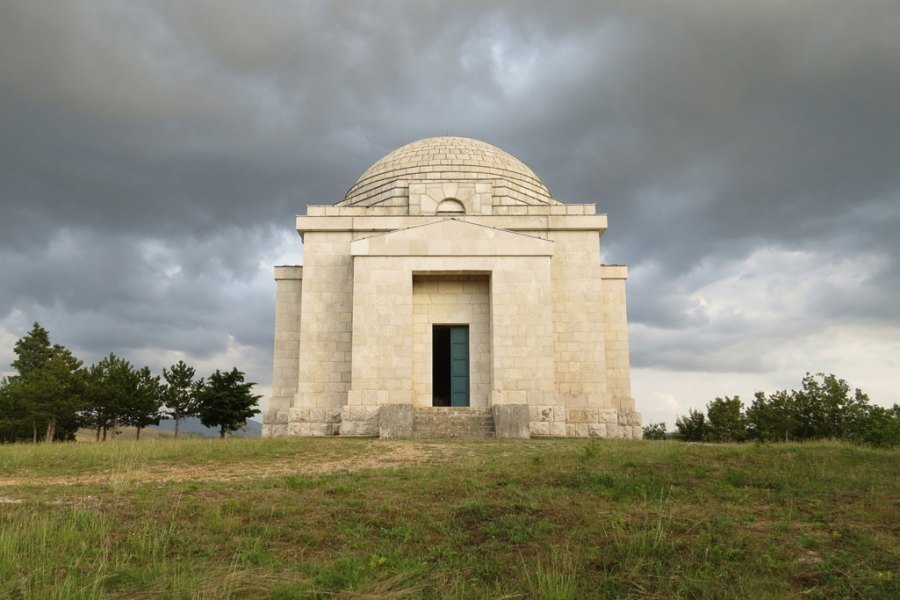
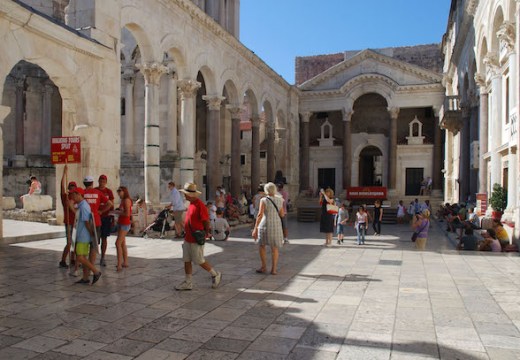
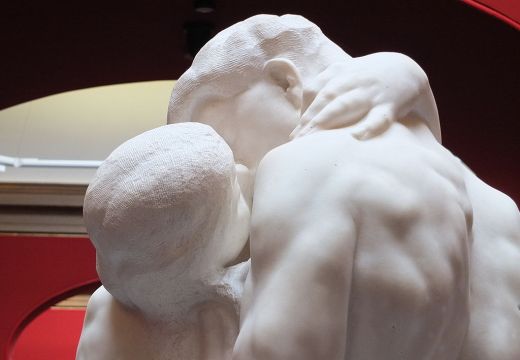
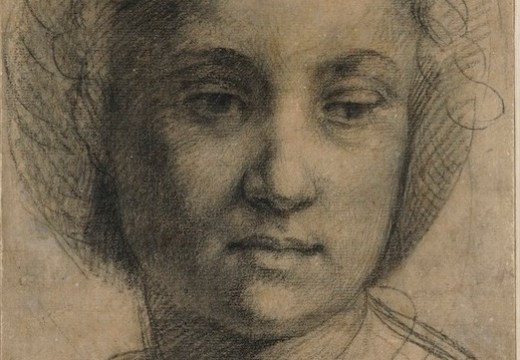









![Masterpiece [Re]discovery 2022. Photo: Ben Fisher Photography, courtesy of Masterpiece London](http://www.apollo-magazine.com/wp-content/uploads/2022/07/MPL2022_4263.jpg)
Has the Fitzwilliam got its rehang right?